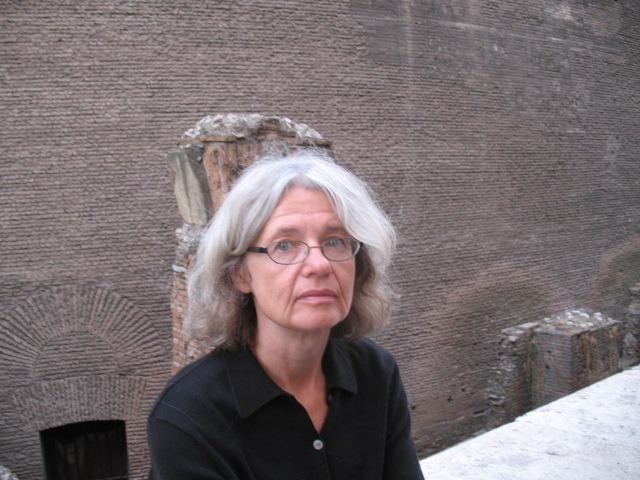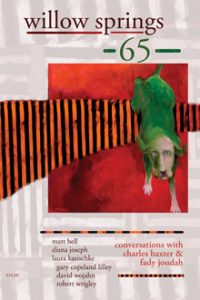
About Melissa Kwasny
Melissa Kwasny is the author of four books of poetry: The Nine Senses (Milkweed Editions, forthcoming in early 2011), Reading Novalis in Montana, Thistle, and The Archival Birds. Sheis editor of Toward the Open Field: Poets on the Art of Poetry 1800-1950, and co-editor, with M.L. Smoker, of the recently released I Go To the Ruined Place: Contemporary Poems in Defense of Global Human Rights. She is currently working on her fifth book of poems and completing a book of literary essays on the image, provisionally titled “The Imaginary Book of Cave Paintings.” She lives in western Montana.
A Profile of the Author
Notes on “Two Poems”
Gaston Bachelard, in his book The Poetics of Space, writes that a true image is one that, in order for it to speak to us, must engage our imagination and thus allow us to “think and dream at the same time.” It is not the image we “look at” which stays on the surface of the page or the wall or the mind, but the one that penetrates into our lives, reverberates like a voice in a cave, radiates out and into us. For two years, I have been visiting petroglyph and pictograph sites in Montana and Canada, reading the research on them conducted in the Americas and worldwide, and consulting with an archaeologist in order to better hear what these images, painted and etched on rocks and inside caves, have to say. As is evident in this selection, I am not interested in creating poems that are discursive or even narrative. Rather, I want to experiment with the image—whether encountered as visionary record on limestone; as dream figure; or as physical animal, bird, or cloud in the mountains where I live. I am trying to learn how to converse with the Image itself.
Notes on Reading
“Writing continues reading, returning action to the labors and delights of the day,” poet Donald Revell writes in his book of essays Invisible Green. Continues reading. To me, this is a marvelous way to describe the act of reading as an ongoing experience, one that doesn’t end when one closes the book or, as a writer, lifts the pen. The poem, Revell seems to be saying, is not a means to an end, an end-stop to one’s reading, or, as he says, an “obstacle to the energies,” but a moving discourse.
I used to work in a used bookstore. I became fascinated with the way people engaged with the text, most predominately in the margins. It was a private place to argue (how many times have we seen exclamation points denouncing something the author said right next to it), to underline, to check, to star, to make notes for further inquiry. In fact, it is a visual notation of the kind of responses we might make in conversation. As I got older—and tired of erasing all these marks in library books or embarrassing myself in ones I loaned—I made fainter marks and returned to them to copy them into my writing notebook, which has evolved over the years into a record of dreams, images from the day, emotional and spiritual questions, and a record of my reading. I add to it extended meditations on those quotes, which sometimes become poems, sometimes inhabit poems invisibly, like a soul of sorts, and lists of books I’ve read along lists of poems I’ve written during that time period. I copy paragraphs from letters, which are often regarding books my correspondents and I have read, and the reading continues.
Regarding underrated books, I agree with Paisley Rekdal that most poetry nowadays is underrated, given the fact that it is rarely reviewed and that many non-poets don’t have access to it, don’t know how to find what they would love. Most women’s work is underrated, or perhaps under-absorbed.


